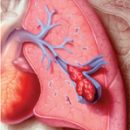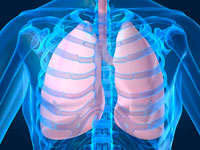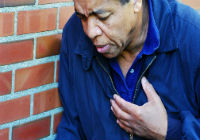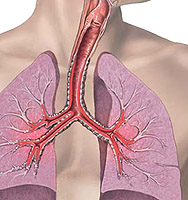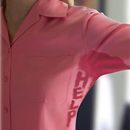Treatment of pleurite in children requires a differentiated integrated approach. Therapy is prescribed in accordance with the nature of the disease individually every child. How dry, serous and purulent, serous and purulent is treated in children - in the article.
Content
- Treatment of dry pleurita
- How to treat exudative pleurisy in children?
- Treatment of purulent pleuritis in children
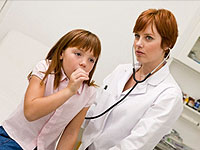 Treatment of pleurite in children requires a differentiated integrated approach. Therapy is determined by the nature of the course of the disease and is appointed individually to each child, depending on the type of disease and the intended pathogen of infection, the presence or absence of complications and the state of the patient.
Treatment of pleurite in children requires a differentiated integrated approach. Therapy is determined by the nature of the course of the disease and is appointed individually to each child, depending on the type of disease and the intended pathogen of infection, the presence or absence of complications and the state of the patient.
Treatment of dry pleurita
Dry pleurisy in children is quite rare, mainly as a complication of pneumonia. Its main symptom is an unproductive cough and chest pain with each breath, it is these manifestations of the disease that cause suffering to a child. The purpose of the therapy of dry pleurit is the fight against infection and inflammation, the suppression of dry obsessive cough.
In the foreground there is therapy of the main disease, most often pneumonia. Traditional events are usually enough to defeat pleurisy.
Upon the protracted flow of dry pleuritis in children and the absence of tuberculosis infection, physiotherapy procedures are prescribed to eliminate inflammation, for example, diathermy, UHF.
Therapeutic respiratory gymnastics is shown, the reception of common agents, vitamin and mineral complex drugs, immunomodulators and adaptogen.
How to treat exudative pleurisy in children?
Exquidative pleurisy is characterized by a cluster in the pleural cavity of the exudate — fluids resulting from inflammation. Children occurs serous and purulent pleurisy, the treatment of these diseases has common features and its own characteristics.
First of all, the child shows a strict bed mode, rational nutrition with restriction of cook salt and liquid.
The exudate accumulating in the pleural cavity limits the movement of the lungs and causes respiratory and heart failure, with an exudative pleurisite resorted to pleural puncture — Punch of the chest and evacuation of liquid. Pleural puncture is carried out only in the hospital, so the child must be hospitalized. The liquid obtained during puncture is directed to the study and according to its results, the infection is judged.
The basis of the treatment of pleuritis in children is antibacterial therapy appointed with regard to the nature of the disease.
Since allergic reactions are involved in the development of serous pleurite, antiallergic drugs are used in the treatment, often with a delayed disease, they resort to the introduction of hormonal means directly into the pleural cavity. Therapy is supplemented by grinding agents, drugs that reduce the permeability and strengthening walls of blood vessels, vitamins C, RR, groups in. To improve the respiratory function of the lungs and the prevention of the battles of the pleura is shown Massage and respiratory gymnastics.
Treatment of purulent pleuritis in children
Purulent pleurrites — The most common form of disease in children. The main task of therapy in this case is the evacuation of a pus from the pleural cavity. Pleural puncture is performed either by a large syringe or the apparatus sweating. After removing the pus between the sheets of the pleura is introduced by an antibiotic. Puncture repeat as needed to complete the pleural cavity. In the absence of the effect of them, the surgical intervention is shown.
General antibacterial therapy is prescribed, taking into account the sensitivity of the causative agent of infection to antibiotics. In order to increase the reactivity of the body, resort to fractional blood transfusions and plasma in order to reduce the severity of the allergic component of the disease use desensitizing agents.
Throughout the treatment, the child needs enhanced care, rational nutrition, aerotherapy. During the recovery period, physiotherapeutic resorption procedures, massages and therapeutic gymnastics are prescribed.
Pulritis forecast in children depends on the nature of the disease and therapy efficiency. Dry and serous pleurisy with adequate therapy and sufficient reactivity of the body ends with recovery. Purulent pleurisy proceeds the most difficult, often requires radical surgery. The consequences of purulent pleuritis can be spikes in the pleural cavity, the deformation of the chest and spine, pneumosclerosis, bronchiectase, the formation of a pulmonary heart and, ultimately, the disability of the child. The outcome of purulent pleuritis depends primarily from timely, as early as possible diagnosis and competent treatment.


